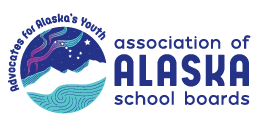Public School Choice, the Constitution, and Local Governance

Lon Garrison, AASB Executive Director
Public school choice, a pivotal issue of this legislative session, holds significant importance in Alaska’s education system. Whether it’s about introducing an alternative path for charter school authorization or the use of public education funds for correspondence/homeschool programs, the impact of these changes on parents and students across the state is undeniable.
Alaska has a long and successful history of offering and supporting public education options. Alaska’s Correspondence/homeschool programs date back to 1939, long before statehood. For 85 years, correspondence and homeschool programs have been a necessary and valued option for many families in our territory and subsequent state due to our unique geographical and lifestyle challenges. Currently, 30 programs are spread across 16 districts. Legislation in 2002 permitted a centralized state program as well as programs offered by school districts that are available to any Alaskan student. Correspondence school students are funded at 90% of the BSA value for students included in the initial attendance count.
Public charter schools became a possibility with legislation passed in 1995. Over the following 15 years, statutory limitations on the number of students attending an individual charter school increased from 30 students to an unlimited number so as to make charter schools more available. Alaska’s thirty charter schools are governed by locally elected Academic Policy Committees (APC), which hire the school principal to administer the school’s educational program. School employees are employed through the district and are subject to district personnel policies. Charter schools are granted a waiver for curriculum and instruction, enabling them to provide a variety of educational programs that may meet student needs more effectively. Charter schools are funded through the BSA, like all other schools in the district.
Alaska also offers residential boarding schools as a third element of public school choice. Residential boarding schools have an equally long history in Alaska, many of which were not public prior to statehood. Unfortunately, a good portion of the early history of boarding schools is filled with sometimes unspeakable trauma, primarily concerning Alaska’s indigenous peoples. That trauma lingers to this day. Nonetheless, seven districts and the state of Alaska operate contemporary residential schools that offer valuable and responsive educational programs and life skills opportunities for many students that may otherwise not be available. They, too, are funded through the base student allocation and some assistance with housing stipends. Local school boards govern all seven district-operated residential schools.
So why all the controversy about public school choice this legislative session? It comes down to Alaska’s Constitution and the interpretation of how public funds are or may be used to fund a student’s education. Article VII, Section 1 of the Alaska constitution states:
The legislature shall by general law establish and maintain a system of public schools open to all children of the State, and may provide for other public educational institutions. Schools and institutions so established shall be free from sectarian control.
Most recently, Superior Court Judge Adolf Zeman struck down an Alaska law permitting the distribution of cash allotments to homeschool/correspondence school parents to use to educate their students through correspondence programs and required individualized learning plans (ILPs). The previous statute, adopted in 2014, had been interpreted most recently by the Alaska Department of Law to allow private and religious institutions to use those funds as part of public education. Judge Zeman determined that practice unconstitutional, while the Alaska Department of Law and Attorney General Taylor refuted that interpretation.
In the meantime, Governor Dunleavy and Education Commissioner Dr. Deena Bishop continue to advocate for the State Board of Education to become an authorizer of charter schools, circumventing local school district governance and input. Instead, the state board, which is appointed by the governor, would develop an authorization process for these new public charter schools and fund them directly through the state. This process has occurred most recently in Utah and Oklahoma. It has led to the creation and funding of charter schools that would otherwise be unconstitutional in Alaska. Circumventing local governance and authorization is the first step in creating a pathway to providing access to private and religious educational institutions using public funds.
There is no doubt that Alaska has some of the nation’s best correspondence, homeschool, and charter school programs. Alaska’s public school districts continue to work hard to support education options that better fit students’ needs. AASB asserts that public schools play a vital role in ensuring every child receives an education, regardless of race, ability, religion, economic circumstance, or special needs. Locally elected school boards oversee public school budgets, ensuring that taxpayer funds are used appropriately. In contrast, circumventing local governance and accountability and providing public funds to pay for private, parochial, or home school tuition and fees diverts limited resources away from public schools, reducing the funds available for classrooms and programs that must serve all the students of Alaska.
The AASB membership believes public school choice should be governed and funded through locally elected school boards. School choices such as charter schools, correspondence/homeschool programs, and residential schools are critical to meeting the diversity of students’ and families’ needs so that they may be successful.
Lon Garrison
AASB Executive Director
